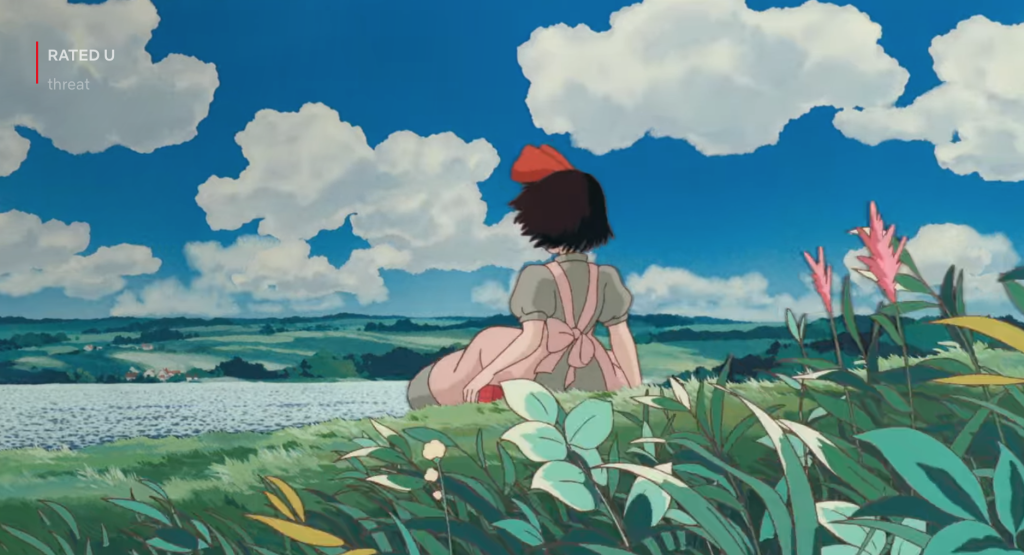Definitely can be interpreted as a metaphor for artistic burnout…

Kiki’s Delivery Service is probably my favourite Miyazaki film – initially because I dreamed of such independence and freedom as a child, but now rewatching, it’s my favourite because I relate so hard to Kiki’s burnout and depression period in the middle of the film.

The opening of the film is dominated by greens, blues and some yellows in her idyllic cottage life. This is a familiar, safe, but boring space for Kiki, though so romanticised by cottagecore enthusiasts now, probably. In leaving this place, she’ll start on a standard Bildungsroman/coming-of-age journey. I particularly adore how beautifully the backgrounds are painted. In doing so, Miyazaki makes it clear that she wants to leave out of her own ambition. She has loving parents that take good care of her, devoted friends, and a beautiful home. There’s nothing unpleasant or inherently unbearable about her life, except that she wants independence. Her motivations are initially only positive.

The big city is also gorgeously designed, with the ornate architecture and signage contrasting Kiki’s more rustic, sturdy cottage. There’s also now the prevalence of purples and warm yellows, faded reds, which help create the atmosphere of European streets. I’m thinking in particular of the painted shops and streaks of sunlight and shadows that alter those colours.

Kiki goes through some difficulties but seems to be finding her feet, until a particularly difficult delivery makes her miss her friend’s party. At the same time, she has her first genuinely unpleasant interaction with another character (“I hate Grandma’s herring pie”, etc.) She loses her powers and shows signs of depression after this – unable to understand Jiji, unable to enjoy what she used to love doing, feeling useless. She is now motivated by fear. What if she can never fly again? What if that’s the only thing she’s good at? The film pointedly connects this lack of vitality and creativity to artistic burnout. Her art friend advises her: “Then stop trying to. Take long walks, look at the scenery, doze off at noon. Don’t do anything. And then suddenly, you’ll be flying again.”

This is so important for anyone in the creative industry. Because art is so connected to the self, when we’re unable to create, it can be a crushing experience. But art is just like any other activity. There will be different seasons, and nothing in nature blooms all the time. We can’t expect ourselves to either.
Also, I doubt lawyers and tax accountants start angsting when they don’t feel passion for their craft. Why should artists?

At the end, Kiki regains her confidence and creativity, and is able to fly with her heart again. She’s able to succeed when it matters – which is all that matters, really. However, she is forever changed by this experience. Jiji never speaks to her again, meowing at her like a real cat in the last few minutes ((edit: UNLESS YOU WATCHED THE ENGLISH DUB VERSION, APPARENTLY? My British friends say that Jiji spoke again in the versions they watched >:OOO)). I think this symbolic of her maturity especially after going through her trials, but maybe a certain innocence is lost. As artists grow and improve at their craft, I guess they also lose the ability to draw with complete innocence and delight, like a child would.
Sometimes you can just tell when an animator is putting their Relatable Artist’s Experience onscreen. This one really connected with me.